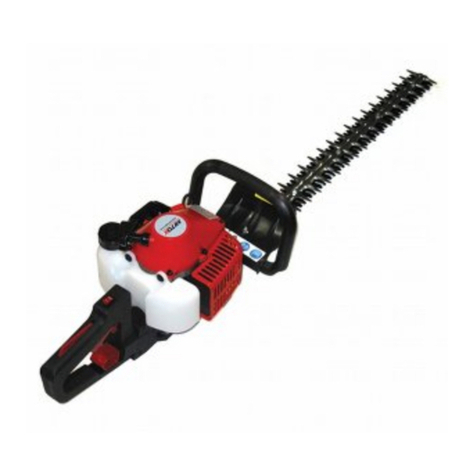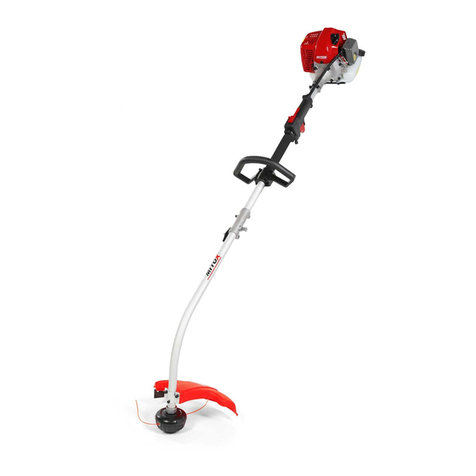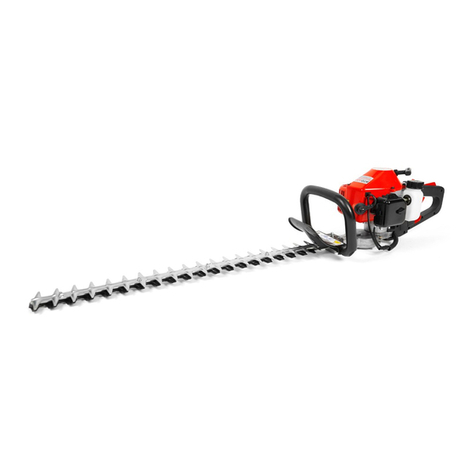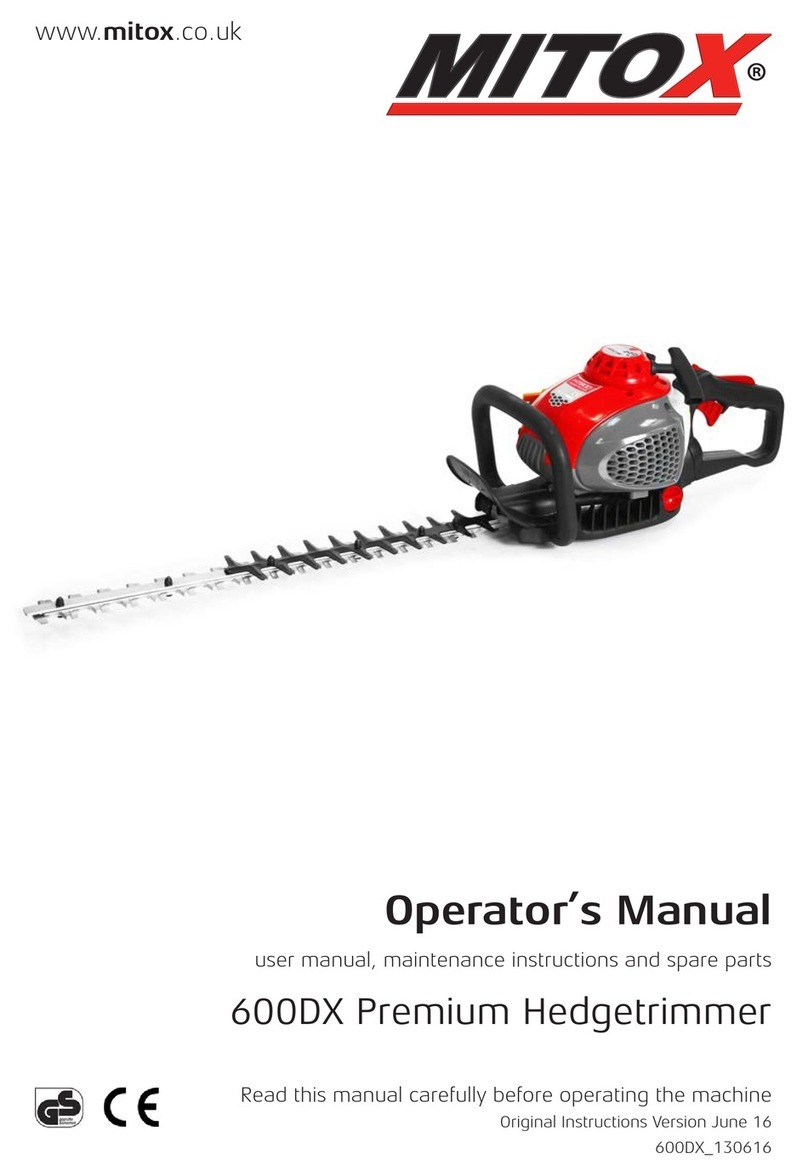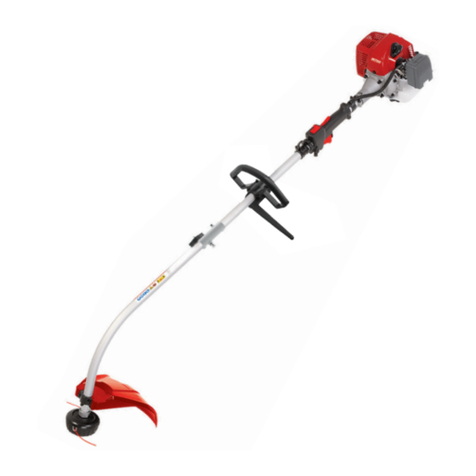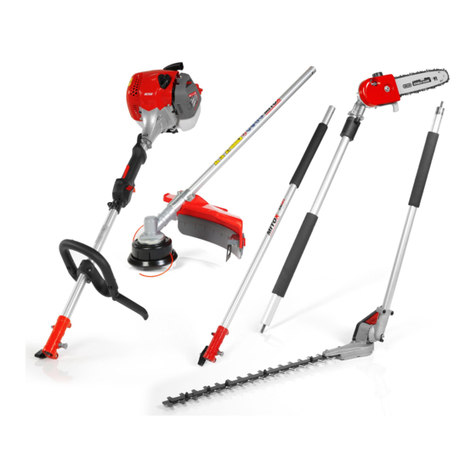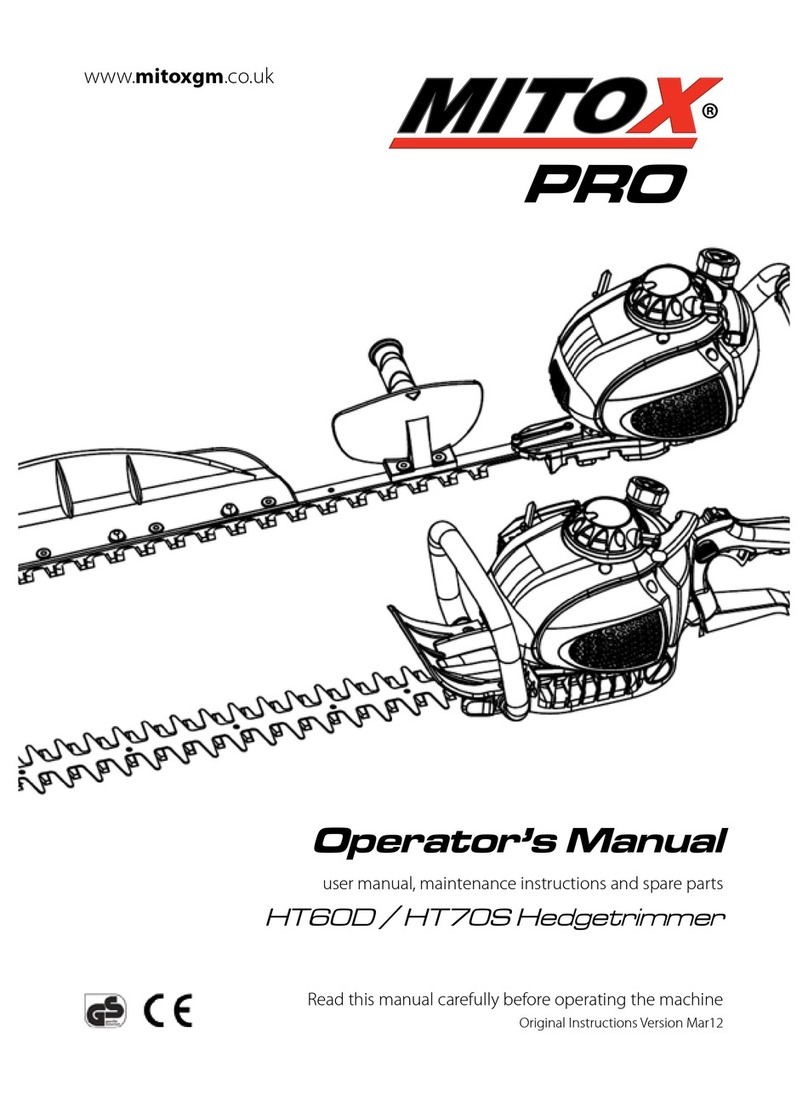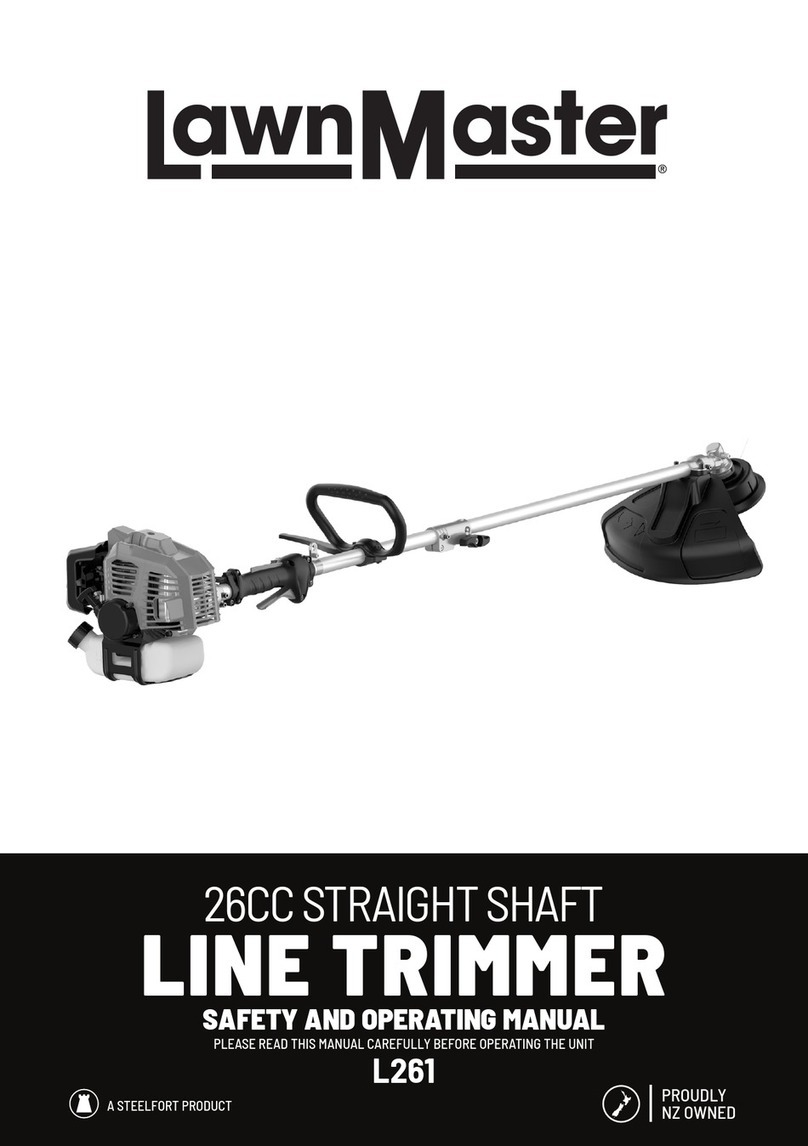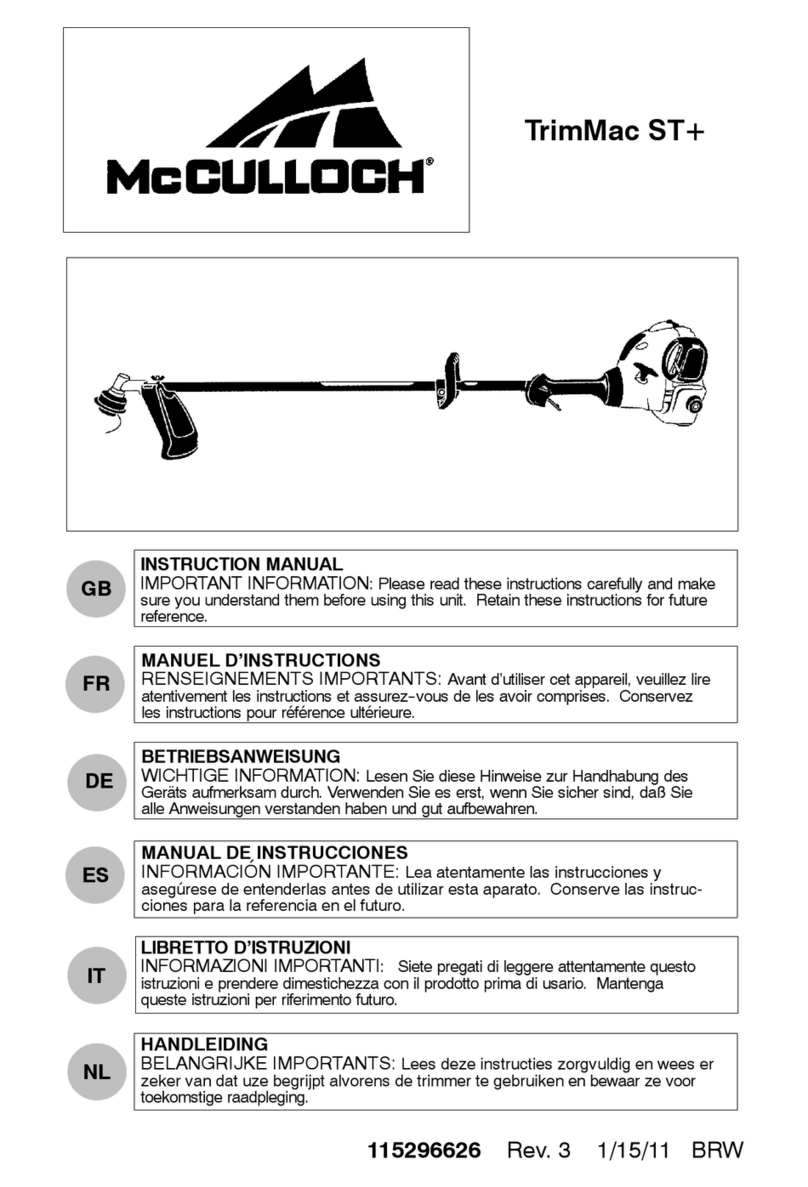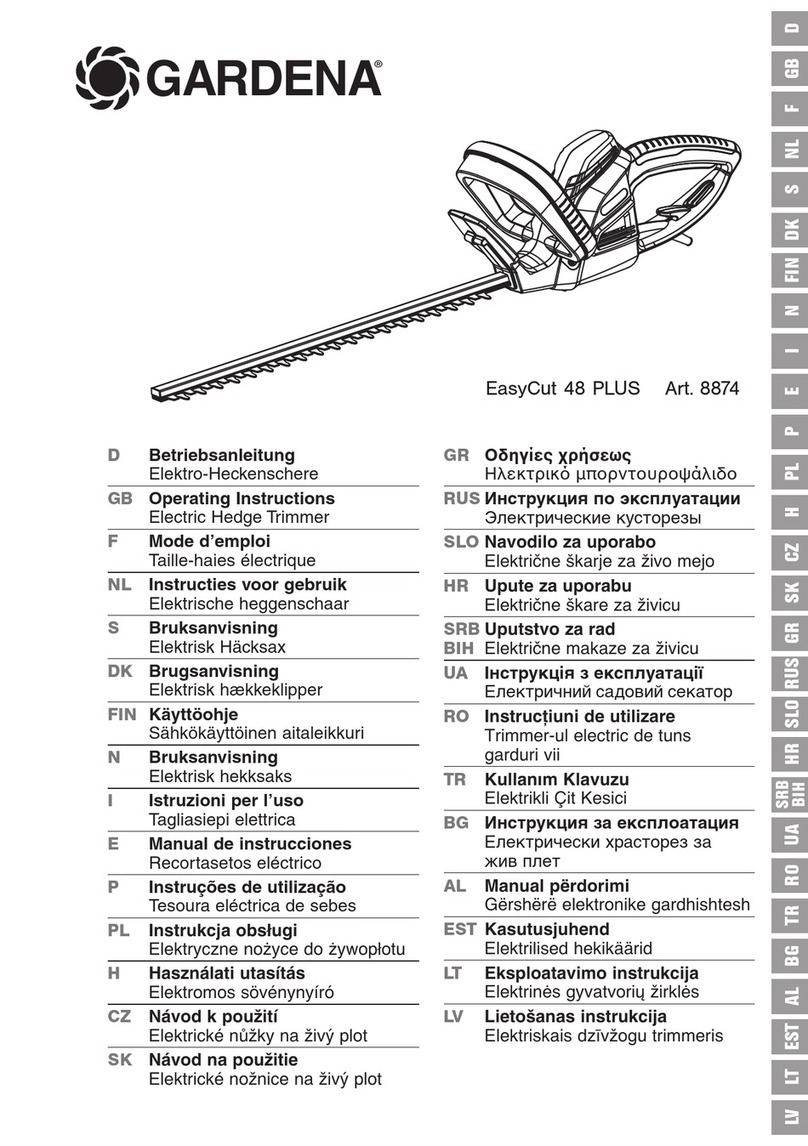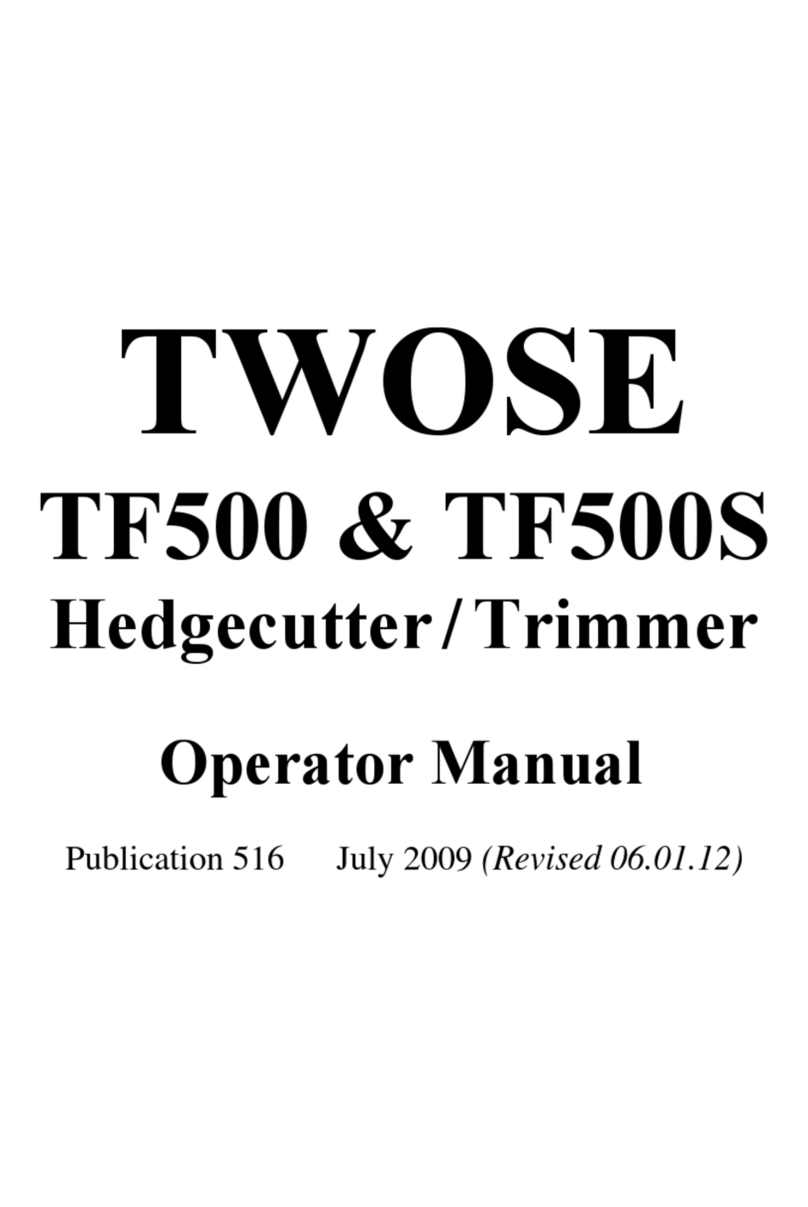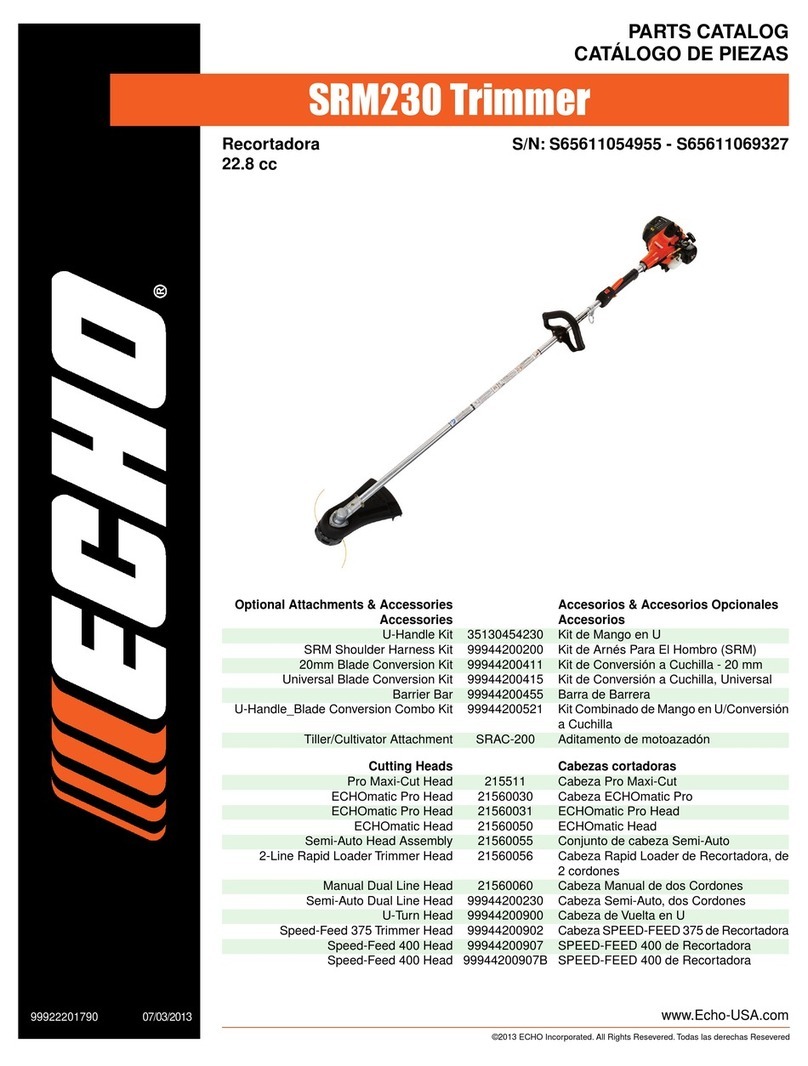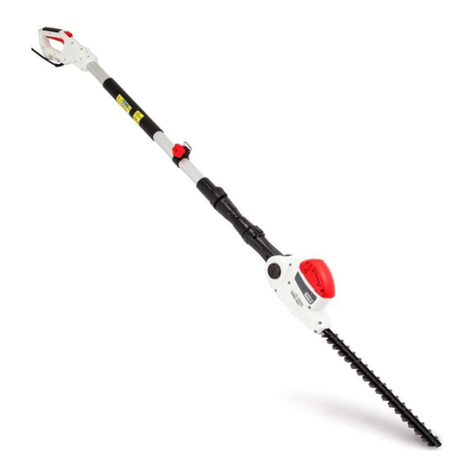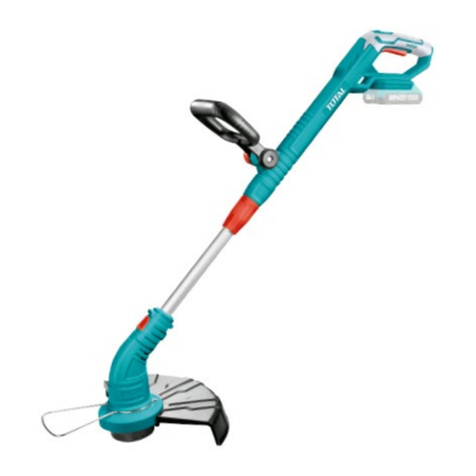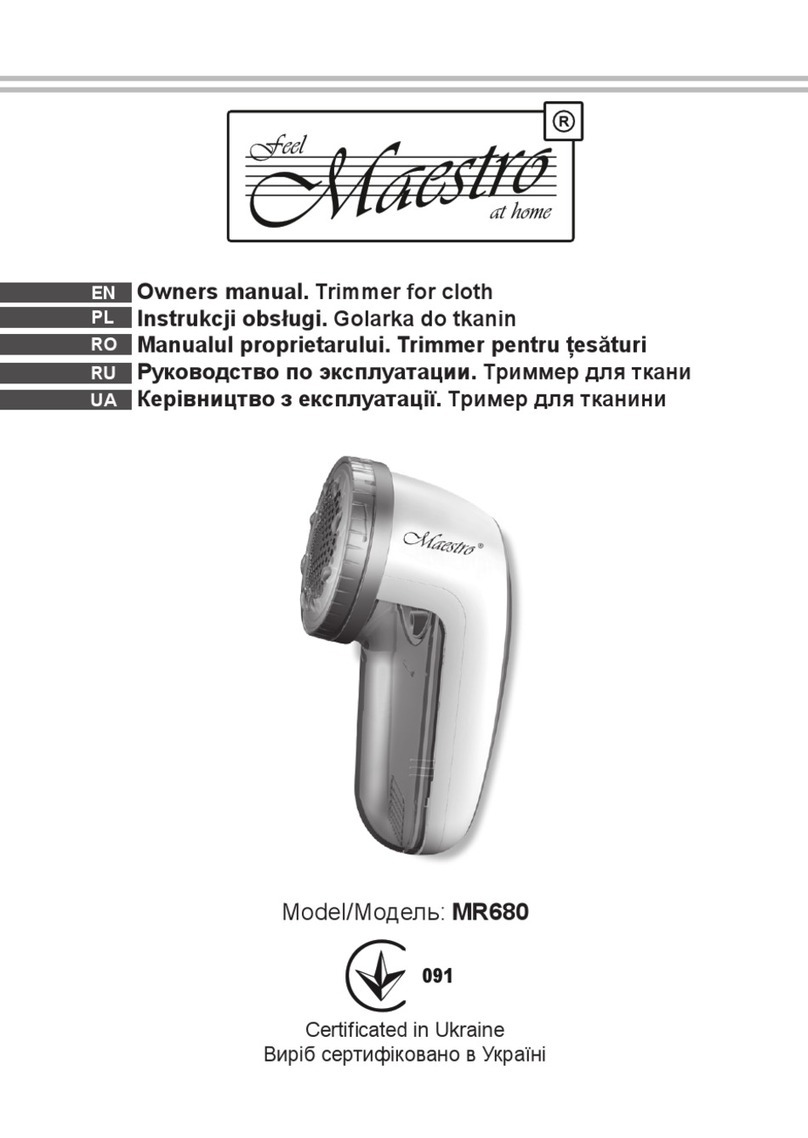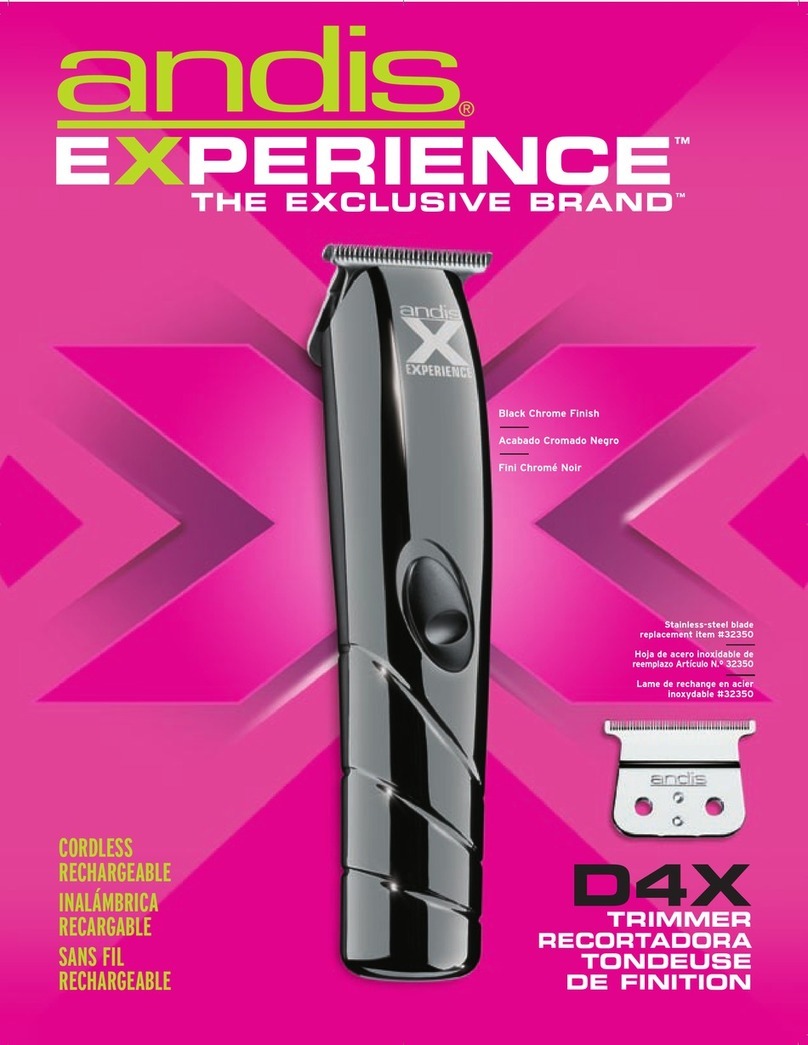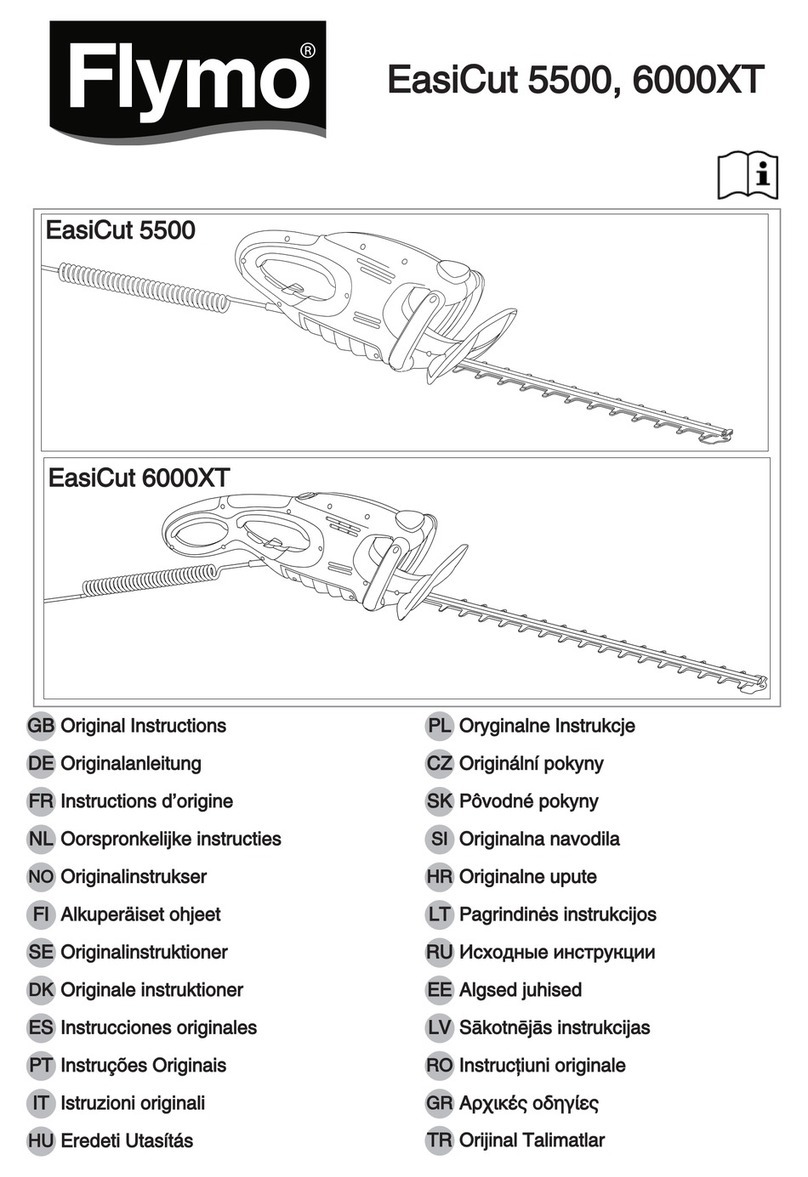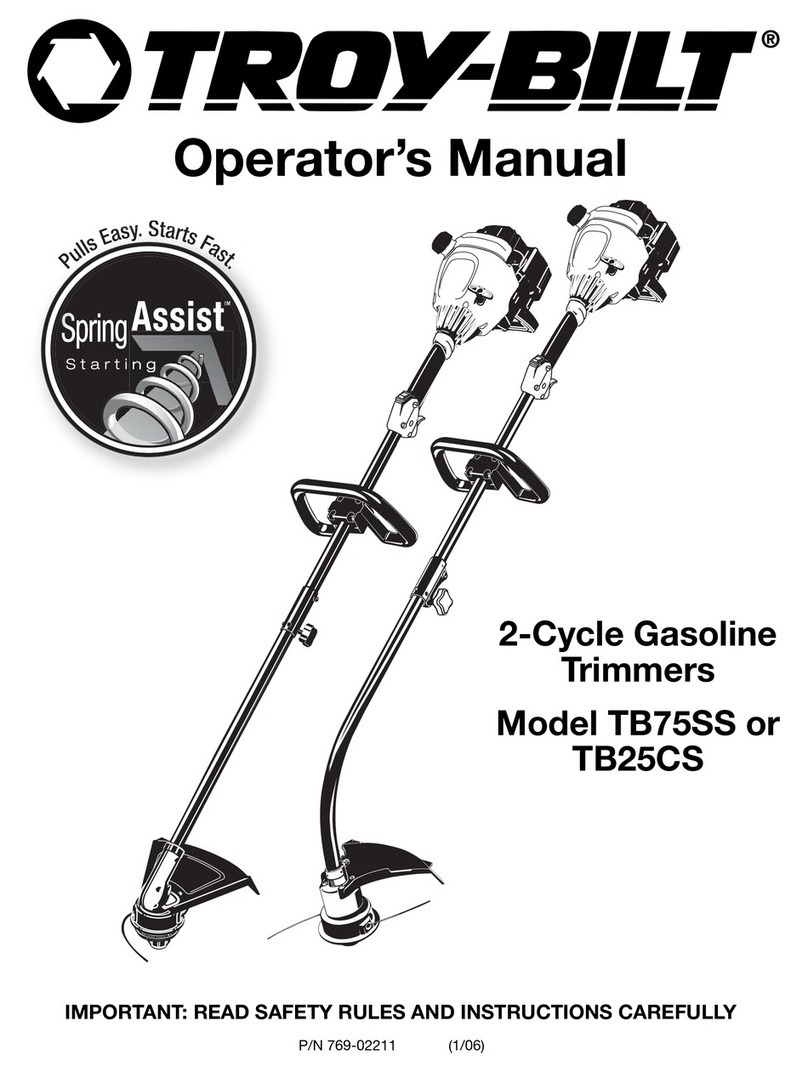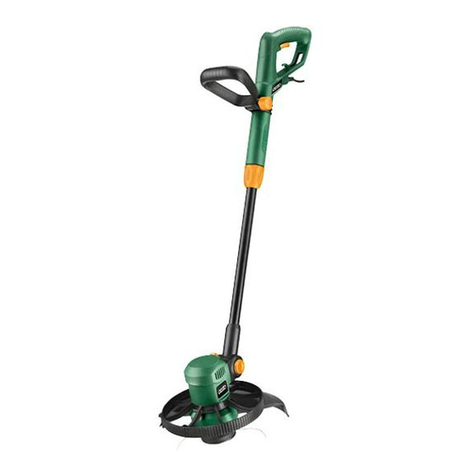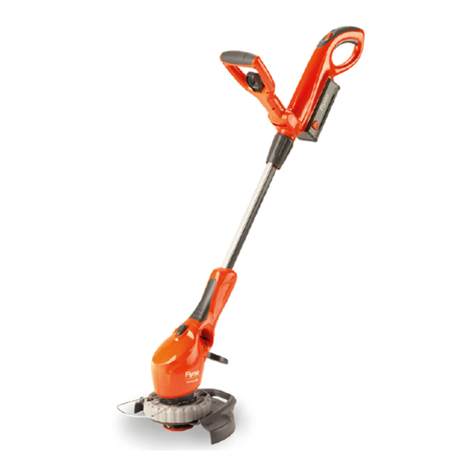
1
READ THIS FIRST
For your safety, read this Owner’s Manual and understand it
thoroughly before operating this HEDGE TRIMMER.
General
A hedge trimmer is high-speed, fast-cutting power tool, not a
toy. For your own safety and the safety of others, read and be
sure you understand all of the safety precautions contained in
the Owner’s Manual before operating the hedge trimmer. Retain
the Owner’s Manual, and make it available to all persons who
will be using the hedge trimmer. Periodically, review the manual
to refresh your understanding of the safety instructions
contained in it.
●Careless or improper use can cause serious or fatal
injury.
Obey the safety instructions contained in this manual as well
as all applicable governmental and workplace safety
standards, regulations and ordinances. Your authorized
equipment dealer can show you how to operate your hedge
trimmer properly.
●Contact with the moving cutter blade will cause severe
injury and the moving cutter blade can hurl objects,
causing injury.
Keep bystanders, children and animals away from the area
where the hedge trimmer is in use.
●Do not allow children to operate the hedge trimmer.
Operators must have sufficient size, strength and maturity to
be able lift and operate the hedge trimmer correctly for
extended periods of use. They must also be able to read,
understand and follow the safety instructions in this manual.
●Exhaust fumes contain poisonous carbon monoxide gas.
Operate your hedge trimmer only outdoors in a well-
ventilated area. Stop the engine immediately if exhaust fumes
cause you to experience symptoms of headache or nausea.
●Gasoline is highly ammable and can be explosive under
certain conditions.
Before refueling, stop engine and allow it to cool. Do not
smoke. Make sure area is well ventilated and free from any
source of flame or sparks, including appliances with a pilot
light. Wipe up fuel spills immediately. Check for and repair
any fuel leaks before starting hedge trimmer.
Operator
●Inattention or fatigue can lead to serious or fatal injury.
Never operate the hedge trimmer under the influence of
drugs or alcohol. Do not use the hedge trimmer if you are sick
or taking medication that causes drowsiness. If you get tired
while using the hedge trimmer, take a break.
●Always wear appropriate protective gear to avoid injury.
Eye protection in the form of goggles or properly fitted safety
glasses must be worn. Hearing protection, such as earplugs,
should also be used. Have your hearing checked regularly.
Protect your hands and feet by always wearing heavy-duty
boots and non-slip gloves when operating the hedge trimmer.
●Loose clothing or hair can lead to injury.
Long hair and loose articles of clothing such as scarves,
neckties, jewelry, and so forth, can become caught in nearby
branches or in moving parts of the hedge trimmer itself.
Always wear sturdy close-fitting long-sleeve shirts and long
pants that still allow freedom of movement. Secure hair so
that it is above shoulder level.
●Maintain your balance to avoid loss of control and injury.
Take care on loose uneven ground. Keep both feet firmly on
the ground while operating the hedge trimmer. Never work on
a ladder, in a tree or any other insecure support. Keep both
hands on the hedge trimmer and do not overreach. Never
attempt to cut overhead or with one hand.
●Always be aware of your surroundings and stay alert for
possible hazards that you may not hear due to the noise
of the hedge trimmer.
●Stop the engine and make sure that the cutting blade is
stopped when cleaning, checking, maintenance or
working on the hedge trimmer.
●Gasoline is highly ammable and can burn or irritate
skin. Change clothing immediately if fuel is spilled on it.
Never remove fuel cap while the engine is running.
●Be alert for signs of repetitive stress injury.
Using a hedge trimmer or any vibrating machinery over a
period of time may cause numbness, burning sensations, or
other indications of injury. If you experience any such
symptoms, discontinue use of the hedge trimmer and consult
your doctor.
Hedge Trimmer
●Modifying the hedge trimmer may make it unsafe.
Never modify your hedge trimmer, except as advised by
Manufacturer in writing. Use only Manufacturer supplied or
approved attachments and repair parts.
●Damaged or loose parts can break off and injure operator
or bystanders.
Always inspect your hedge trimmer before each use. Check
to be sure the throttle works smoothly and snaps to a closed
position when it is released. Never use a hedge trimmer with
a sticking throttle lever. Be sure the cutting tool is fastened in
place properly and is not cracked, bent, warped or broken.
●Blade cover must be tted on cutting blade when the
hedge trimmer is not in operation.
●To reduce re hazard keep the engine and mufer free of
debris, leaves or excessive lubricant.
●Recoil starter rope can injure you if released suddenly.
When starting the engine, grasp the recoil starter firmly by the
grip. Do not grasp the starter rope itself. Always control the
rope during rewind into the housing. Releasing the starter
rope suddenly may allow the rope to whip around and injure
you or damage the recoil starter mechanism.
●Proper maintenance is essential for safety.
A well-maintenance hedge trimmer is safer and operates
more efficiently. Regularly check hedge trimmer adjustments
and replace worn or damaged parts. If engine idle speed is
set too high, the cutting blade will not stop when the operator
releases the throttle. A worn out or damaged muffler can emit
sparks and cause a fire. Increased noise levels can lead to
hearing loss. A dull cutting blade is more likely to snag than a
sharp blade. Observe maintenance schedule in the Owner’s
Manual.
●Store hedge trimmer safely to prevent re or equipment
damage.
To avoid fuel leakage and fire hazard, always empty the fuel
tank and run carburetor dry before storing your hedge
trimmer. Old fuel can clog the carburetor and lead to hard
starting or poor running conditions Store hedge trimmer in a
dry, secure location out of the reach of children. When
transporting hedge trimmer in a vehicle, take precautions to
secure it against damage from falling over and fuel spillage.
